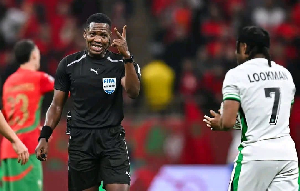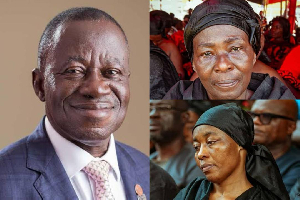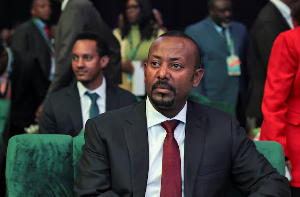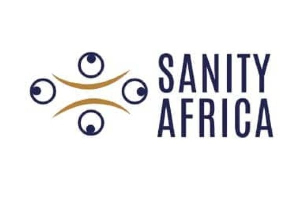By Thelma N. A. Maclean (Msc Money Banking and Finance)
naaakugh@yahoo.com
In 1987, ECOWAS formed the ECOWAS Monetary Cooperation Programme (EMCP) with the goal of initiating a single monetary zone which would be associated with a single currency by the year 2000. This single currency would be administered by a universal Central Bank and sustained by an exchangeable guarantee arrangement policy.
The main advantages of such a single monetary union includes; enhancing and facilitating the sub-regional payment system under the West African Clearing House (WACH), capital, labour and resource mobility within the ECOWAS zone, increasing economies of scale in monetary management and reducing transaction cost, as well as promoting West African intra-regional trade and businesses. In order to achieve this goal, the EMCP established an array of macroeconomics convergence criteria for member states to meet before the commencing of the monetary union. The macroeconomic indicators to be met by member states were to; maintain constant price levels, stabilize public finance, control and limit monetary financing of public deficit and strengthen gross foreign exchange reserves at suitable levels.
However, by the year 1999, it was perceived that the aim of establishing a single monetary integration was just a mirage. Some of the main drawbacks for the unsuccessful implementation of the programme were lack of political zeal and dedication, conflicts of interest between Anglophone and Francophone West African countries, lack of policy synchronization and organization between West African countries (especially the Francophone countries), inconsistency in the acceptance of the obliged macroeconomic structure, as well as external influences, especially, the powerful influence of France on Francophone West Africa.
These drawbacks resulted in the establishment of a new strategy called the Two-Track Fast Track approach in December 1999. After the development of this approach, Nigeria and Ghana initiated and conferred with the Heads of State of Liberia, Guinea, Sierra Leone and the Gambia. At a summit held in Accra, Ghana (April, 2000), the Governments of the six countries signed a statement for the Second Monetary Zone and also for a single currency and a universal Central Bank by the year 2003. This was to follow the final merger with the Union Economique et Monetaire Ouest Africaine (UEMOA) zone by the year 2004. The UEMOA zone is the only monetary zone consisting of countries with a common currency in Africa, CFA Franc, which is pegged to the Euro.
In December 2000, at a subsequent summit in Bamako, Mali, the Governments launched the Second Monetary Zone as West African Monetary Zone (WAMZ). To achieve this, the officials set up an institution called West African Monetary Institute (WAMI) to facilitate and establish the WAMZ. Like the EMCP, member states were to meet a set of macroeconomic convergence criteria by the year 2003 before joining the WAMZ. Some of the convergence criteria includes; reducing deficit of the GDP ratio to 4% by 2002, single digit inflation, 5%, limiting central bank financing of deficit to 10 percent and preserving adequate level of gross external reserves of at least 6 months of imports by 2003. However, after the convergence assessment in the middle of 2002, it was realized that although some achievements were observed, these were not feasible enough to aid the initiation of the monetary zone in January 2003. Some of the major issues that hindered the successful implementation of the Eco were civil conflicts that various member states continued to face, lack of commitment of member states, as well as poor performance of macroeconomic policies and convergence.
Consequently, the WAMZ programme was further extended to 30th June, 2005. After the review of the WAMZ programme in May 2005, WAMI concluded that member states had still not met the required criteria for the successful implementation of the WAMZ programme. They recommended that member states should put some necessary structures in place, strengthen their balance of payments, reduce inflation and also maintain a sound political environment in order to meet the convergence criteria. Hence, the launch of the monetary union was rescheduled to 1st December 2009 to give ample time for member states to meet the criteria, implement structural benchmarks and also to re-design an Action Plan called Banjul Action Plan (BAP). The BAP will specify a ten-point benchmark to certify a successful implementation of the union on the new set date. The Director of Research and Statistics of WAMZ, Mr. Tei Kitcher, in a report noted that, although there is considerable growth in GDP, inflation rate continues to surge up and Fiscal policies among member states continue to deteriorate. He reported that as at June 2008, the Gambia was the only country that had achieved four criteria. Nigeria had achieved three while Guinea and Sierra Leone sustained two criteria, with Ghana recording only one criterion. Hence it was not shocking that, the Gambia was the only country that met the convergence criteria by 1st December, 2009 whilst the rest failed. Currently, the WAMZ programme is at a cross-road and is designed under the umbrella of BAP 2009-2015.
The vital question is, can the remaining member states be able to meet the convergence criteria by the year 2015? Well, it will all depend on the macroeconomic structures and political cohesions member states put in place. This is because in order to establish a single monetary union, it must be cemented on sound macroeconomic essentials, as well as organizational and infrastructural growth. If these structures are not in place then officials should forget about the WAMZ programme completely.
Reference Abudu, M., 2003; “Challenges of the Introduction of the Eco to WAMZ Business and Consumers: A Prognosis”, WAMI, West African Journal of Monetary and Economic Integration, Vol. 3, No. 2, Accra. WAMI, 2004; “The Transition into the Monetary Union of the WAMZ, 2004-2005: Critical Steps, Strategies and Responsibilities. WAMI, 2004; “Assessment of the Progress and State of Preparedness for a Single Currency in the WAMZ”; Presentation by WAMI at the Meeting of ECOWAS Central Banks Governors, Dakar, Senegal, June. WAMI, 2002; ‘Macroeconomic Developments and Convergence Report for 2002’. WAMI, 2003; ‘Macroeconomic Developments and Convergence Report for 2003’. WAMI, 2004; ‘Macroeconomic Developments and Convergence Report for 2004’. WAMI, 2005; ‘Macroeconomic Developments and Convergence Report for 2005’. WAMI, 2009; ‘Macroeconomic Developments and Convergence Report for 2009’.
Opinions of Tuesday, 16 March 2010
Columnist: Maclean, Thelma N. A.














